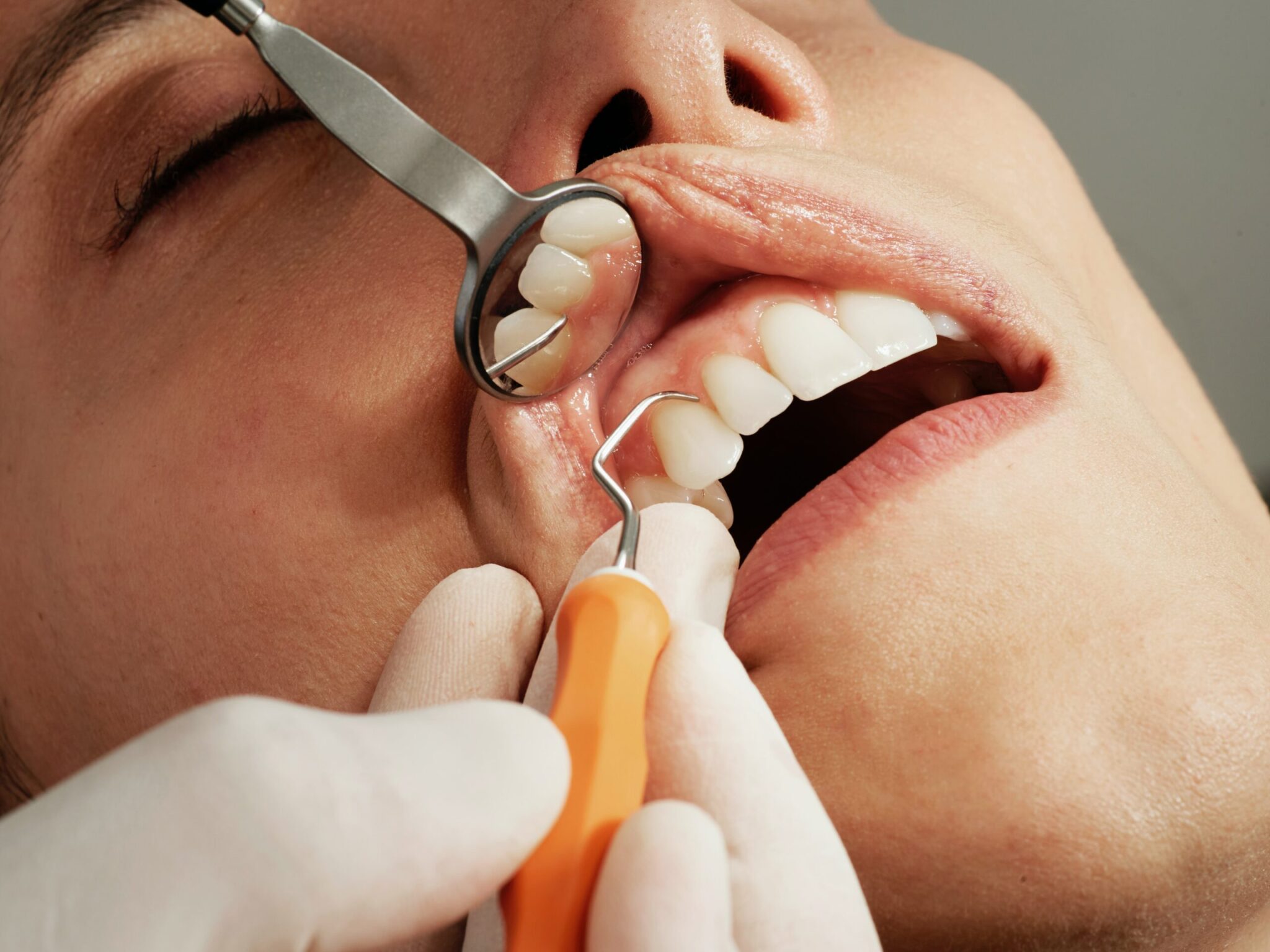
Dentists look at teeth. Periodontists look beneath them. Gums, ligaments, and bone—all critical, all hidden. These tissues hold your teeth in place. If they weaken, teeth loosen, tilt, or fall out. Cavities don’t cause that. Bone loss does. That’s where periodontists step in. Their training covers surgery, regeneration, and microscopic infections.
Gum inflammation that doesn’t improve with brushing may signal something deeper
Bleeding during brushing isn’t always about hygiene. Sometimes, the body fights a deeper infection. Plaque hardens into calculus. Bacteria colonize below the gum line. Inflammation turns chronic. The gum pulls away from the tooth. A deep pocket forms. Toothbrushes can’t reach there. Periodontists clean what others can’t.
Periodontal pockets allow bacteria to destroy bone silently over time
You can’t see bone loss in the mirror. It doesn’t hurt, not at first. But infection eats away at bone. Once it’s gone, it doesn’t return easily. Teeth shift. Gaps widen. Chewing feels off. X-rays reveal the damage. A periodontist measures pocket depth and plans accordingly.
When standard cleanings aren’t enough, a periodontist performs scaling and root planing
This deep cleaning goes below the gum line. It scrapes off hardened plaque. It smooths roots. That discourages bacterial reattachment. Local anesthesia is used. It takes time. Usually done in sections. Afterward, gums may bleed less. Breath improves. Swelling reduces. Healing begins from below.
In more advanced cases, surgical intervention becomes necessary
Sometimes, cleaning can’t fix the problem. Pockets stay deep. Bone craters form. Gum flaps block access. Surgery reveals the root surfaces. Damaged tissue is removed. Bone may be reshaped. Membranes or grafts are added. Healing starts under direct vision. This helps regeneration—not just maintenance.
Bone grafting restores lost support where infection caused permanent damage
Once bone disappears, it must be rebuilt. Grafts provide a framework. The body follows with new cells. Materials vary: human, bovine, or synthetic. The site is secured, closed, and monitored. It takes months to integrate. Without grafting, implants may fail. Grafts give them something to hold.
Gum recession exposes roots and leads to sensitivity or aesthetic concerns
Receding gums aren’t only cosmetic. They leave roots vulnerable. Brushing becomes painful. Hot drinks sting. Periodontists cover exposed roots. Graft tissue is borrowed from the palate. Or donated tissue is used. The site heals slowly. Over time, coverage improves comfort and restores symmetry.
Periodontists also assist with placing and maintaining dental implants
Implants go into bone—not just gums. Periodontists assess bone thickness and density. They guide implant placement. Angles matter. So does spacing. Long-term success depends on soft tissue management too. They create gum contours that protect the implant. Maintenance cleanings follow. Infection control remains lifelong.
Peri-implantitis mimics gum disease, but around a titanium screw instead of a tooth
It starts the same—redness, swelling, bleeding. But it spreads faster. Bone loss is harder to stop. If caught early, cleaning may help. Injections or laser therapy may follow. Advanced cases need surgery. Some implants are removed. Periodontists handle these complications with specific tools and protocols.
Medical conditions like diabetes increase periodontal risk and require close monitoring
Poor blood sugar control slows healing. It feeds bacterial growth. Gums inflame easily. Infections become harder to contain. Periodontists coordinate with physicians. Treatment plans adjust. Timing matters. Procedures are sometimes delayed. Prevention becomes the goal. Routine cleanings increase. Medications are reviewed.
Smoking weakens gum tissue and masks inflammation, complicating diagnosis
Nicotine constricts blood vessels. Bleeding reduces. That’s not a good sign. It hides damage. Healing slows. Surgery fails more often. Implants reject more frequently. Periodontists ask about smoking history. They don’t judge. They plan differently. Outcomes improve when patients quit.
Pregnancy can cause hormonal shifts that make gums more reactive
Some women notice swollen, bleeding gums during pregnancy. This isn’t from poor hygiene alone. Hormones fuel the response. Gums overreact to plaque. Periodontists recommend gentler cleanings. They postpone major surgeries. Education becomes key. After birth, inflammation often settles. But early care prevents long-term harm.
Braces and orthodontic treatments require healthy gums and bone as a foundation
Moving teeth through infected bone worsens damage. Periodontists clear infection before braces begin. They work alongside orthodontists. Monitoring continues throughout treatment. If gums recede or pockets deepen, plans adjust. Collaboration prevents irreversible harm. Beauty must not outrun biology.
Clenching or grinding worsens periodontal stress, especially when bone is already compromised
Bruxism tightens muscles. It adds pressure to roots and ligaments. Gums pull back. Bone shrinks faster. Nightguards reduce damage. Bite adjustment may follow. Periodontists spot these signs early. They address mechanical stress—not just bacteria.
Genetics can make some people more prone to aggressive periodontal disease
Hygiene helps. But some still lose bone quickly. Family history matters. Immune response varies. Periodontists order bacterial cultures. They test enzyme markers. They use customized antibiotics. Genetic tendencies aren’t destiny. But they require vigilance.
Children and teens can develop early-onset forms of gum disease, often overlooked
Bleeding gums in young patients shouldn’t be ignored. Hormonal shifts or braces aren’t always the cause. Some develop rapid bone loss. Early referrals to periodontists help. Treatment includes cleanings, mouthwashes, and sometimes surgery. Delay leads to lifelong issues.
Regular maintenance visits with a periodontist prevent recurrence after treatment
One cleaning isn’t enough. Bacteria return. Habits slip. Maintenance cleanings occur every 3–4 months. Periodontal charts are updated. X-rays reviewed. Pockets measured. Home routines reviewed. Adjustments are made. Stability depends on follow-through.
